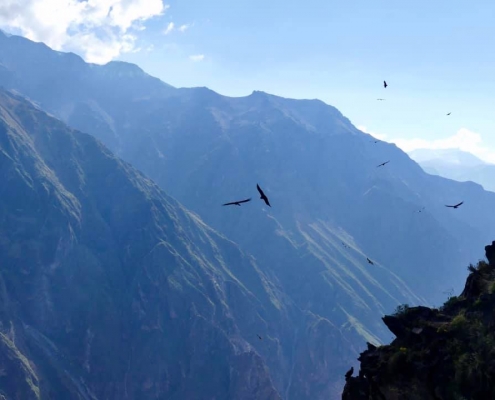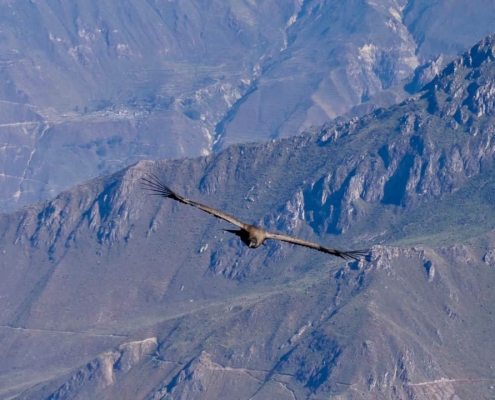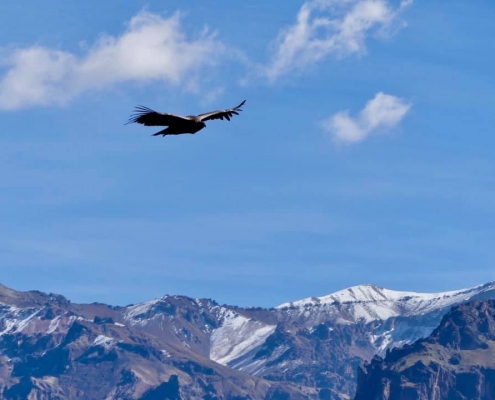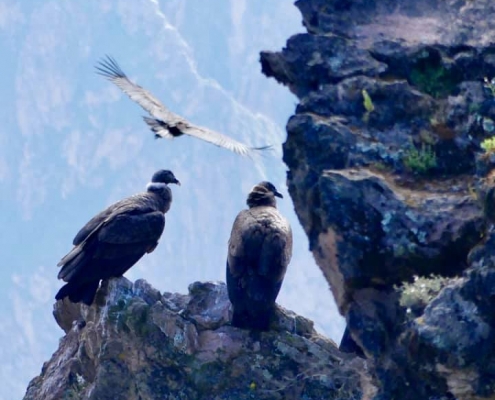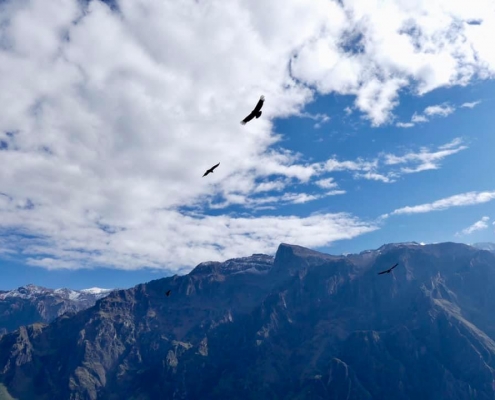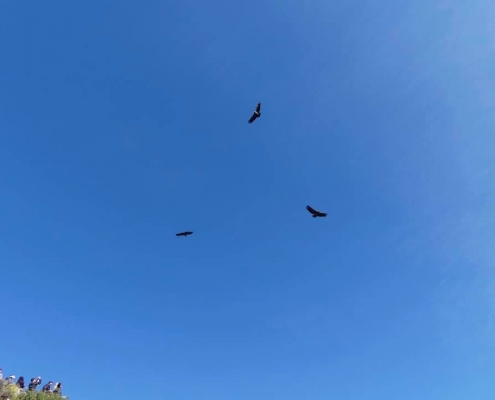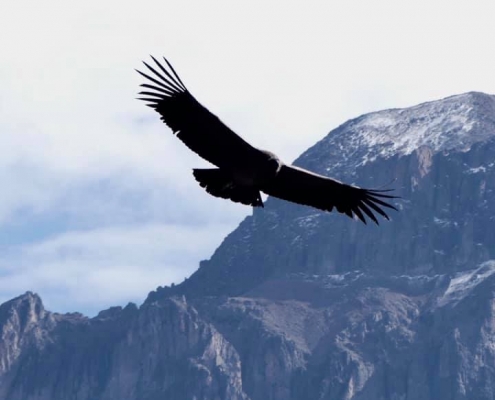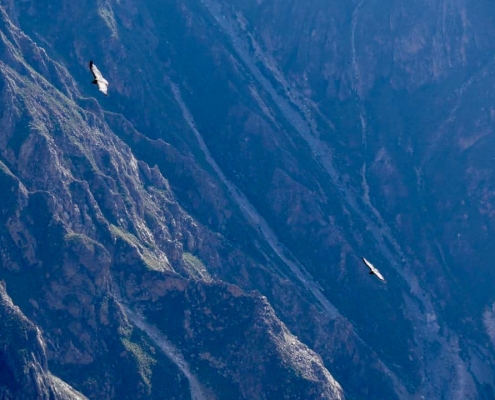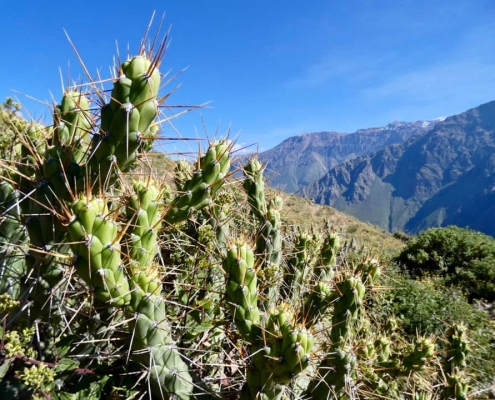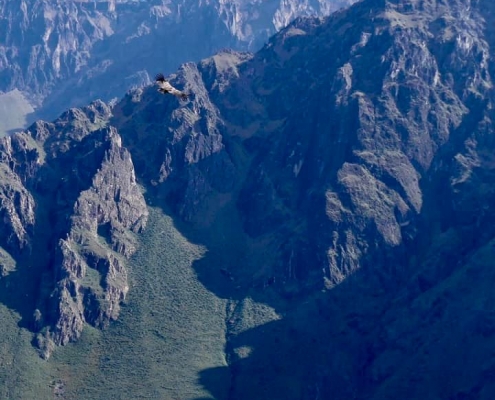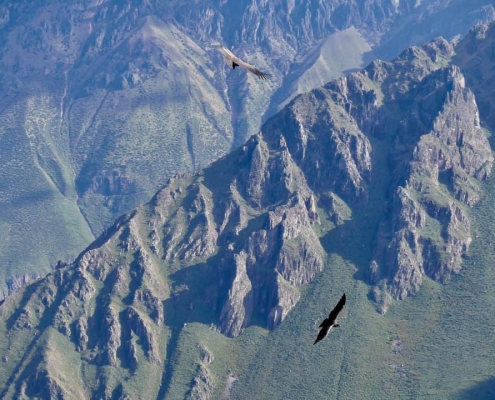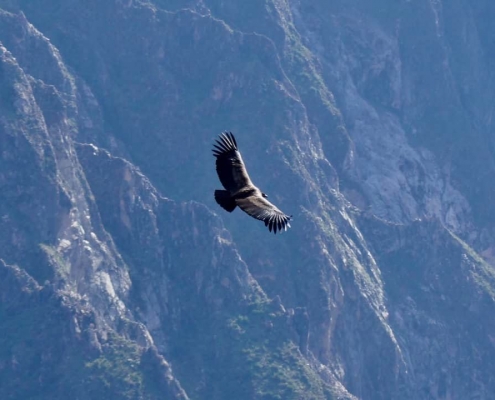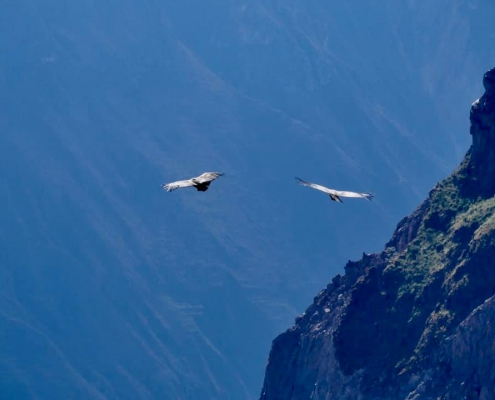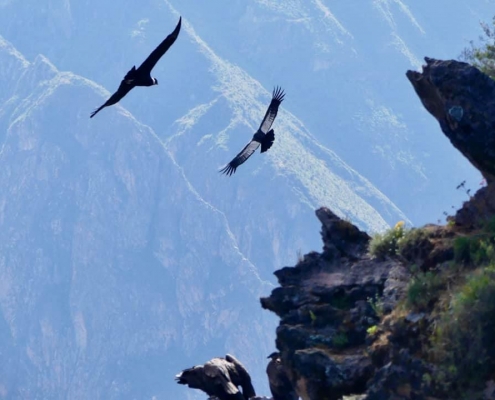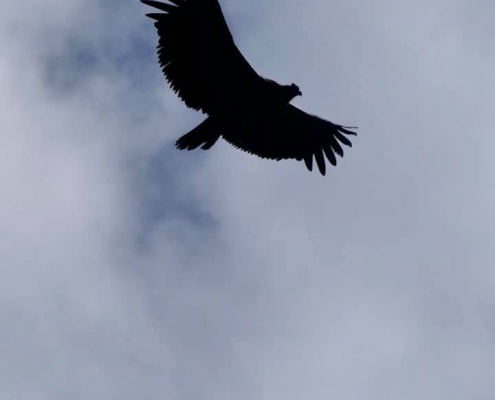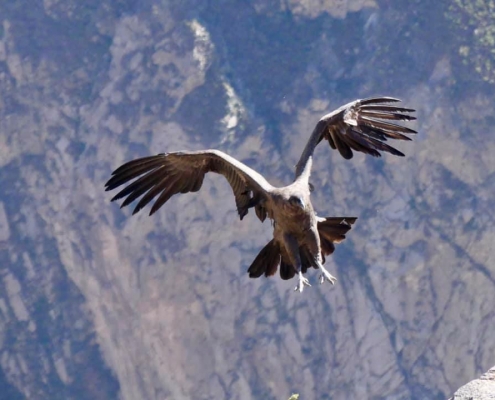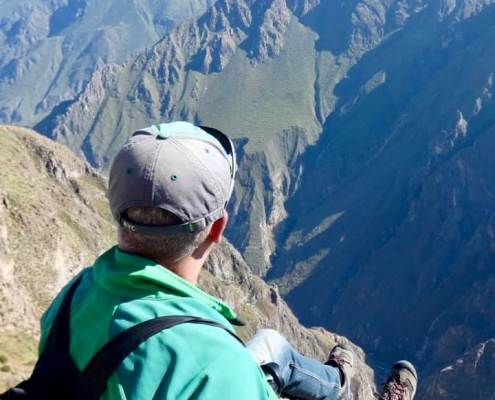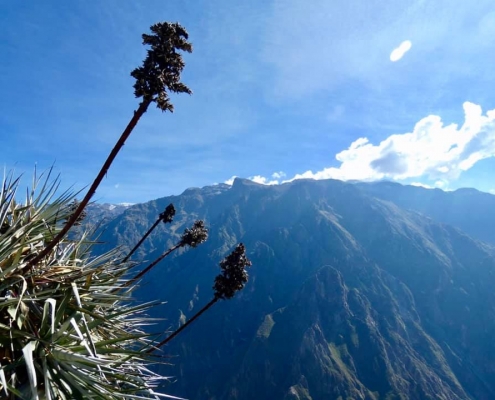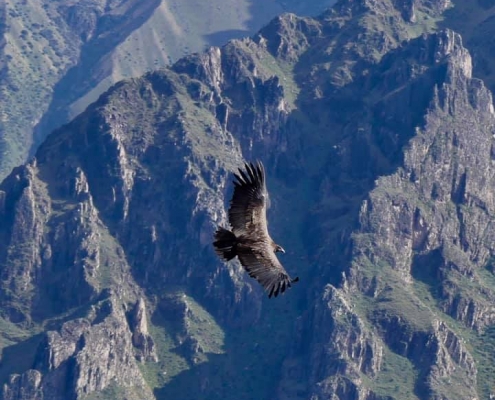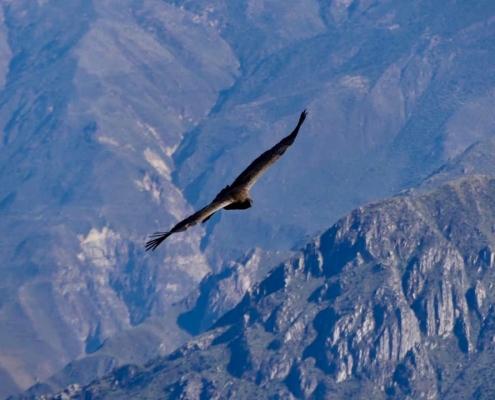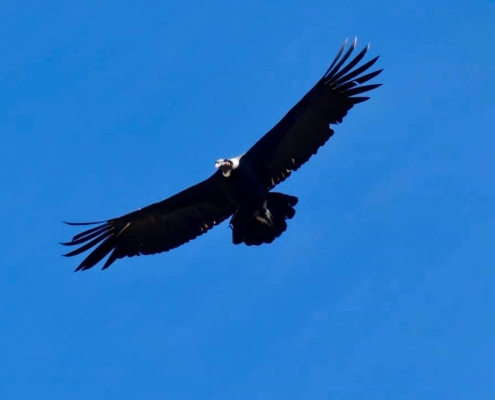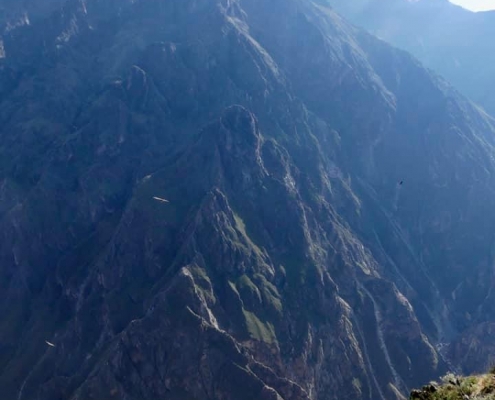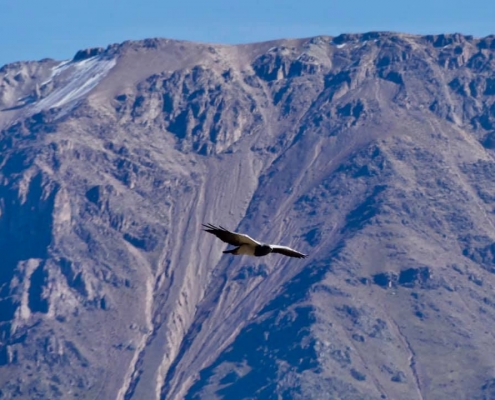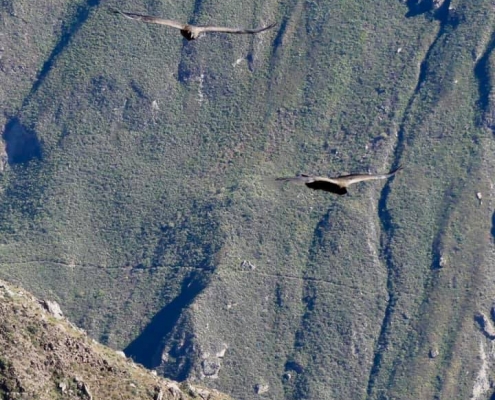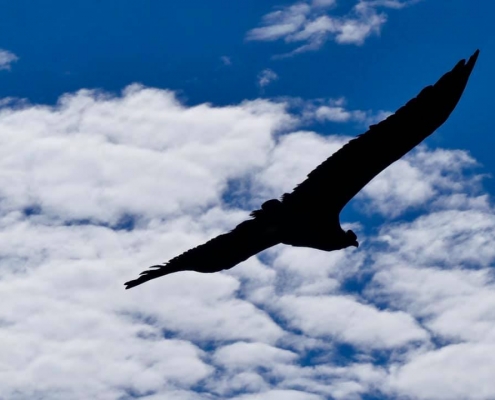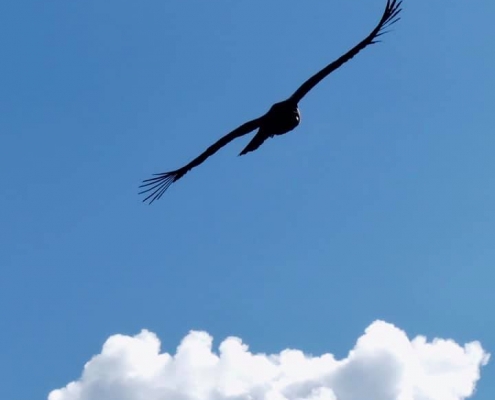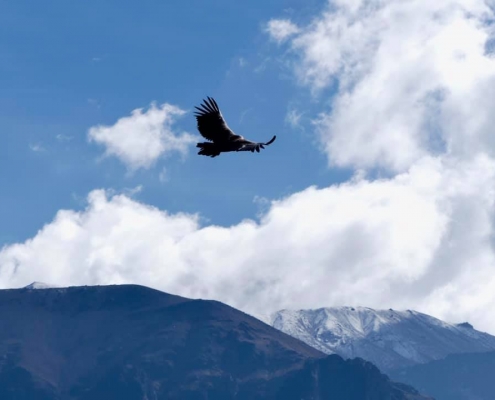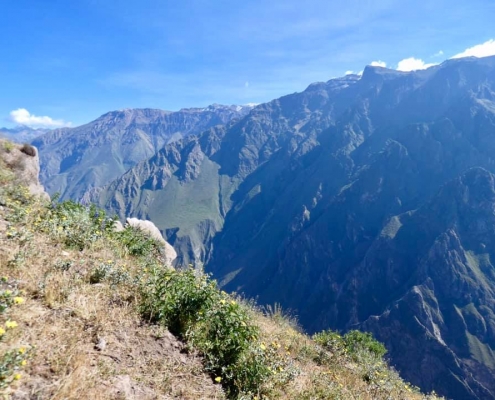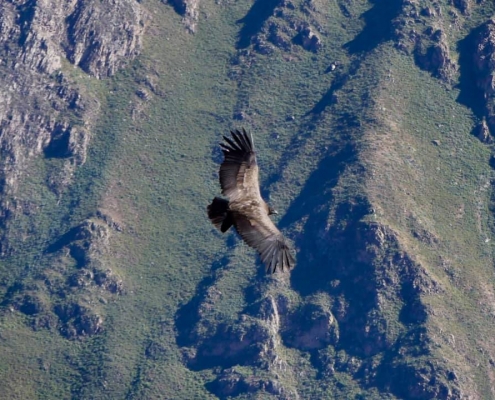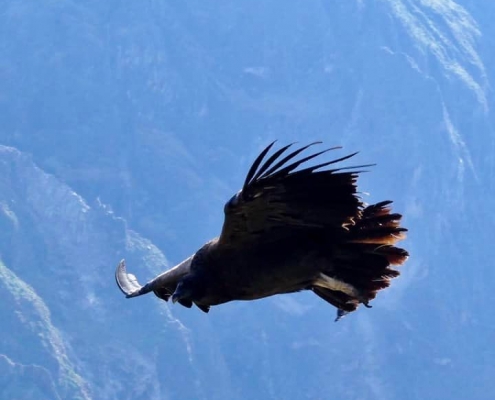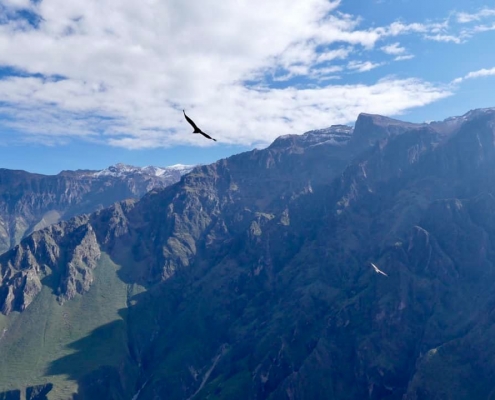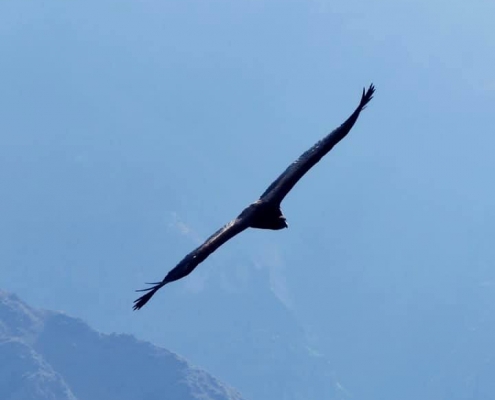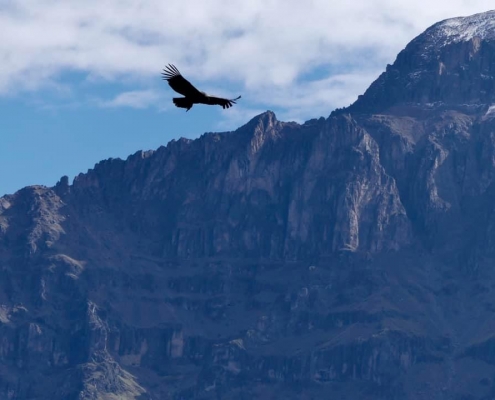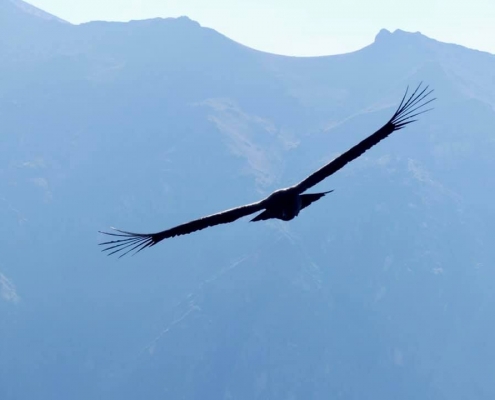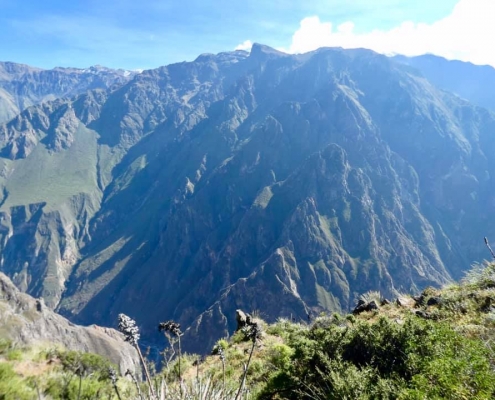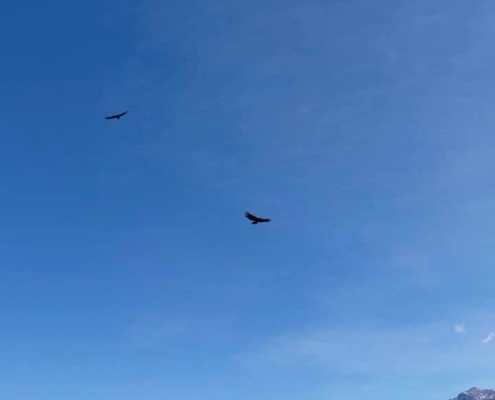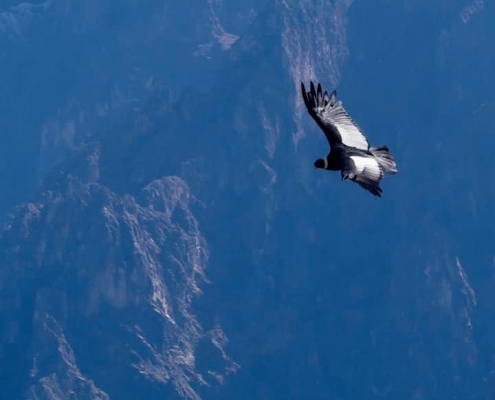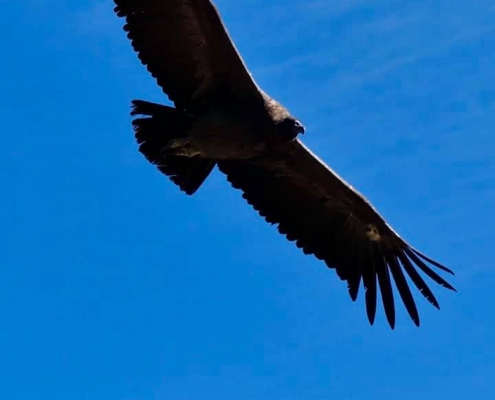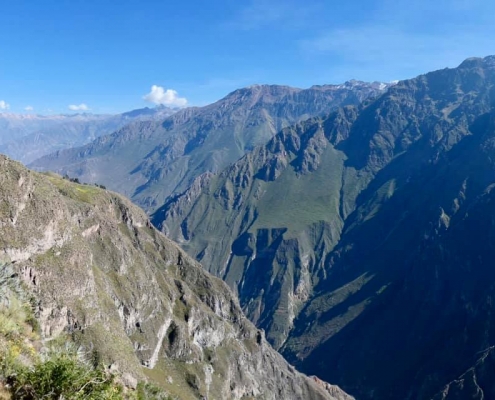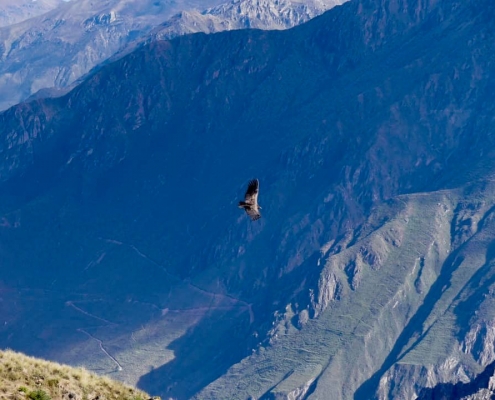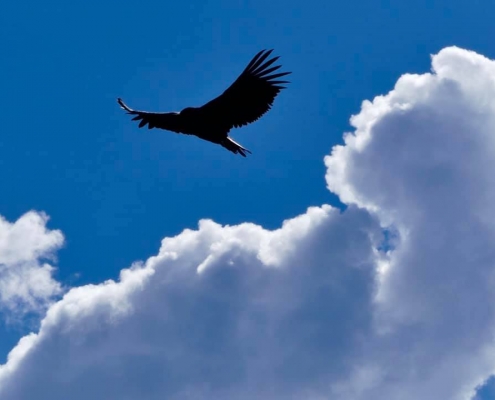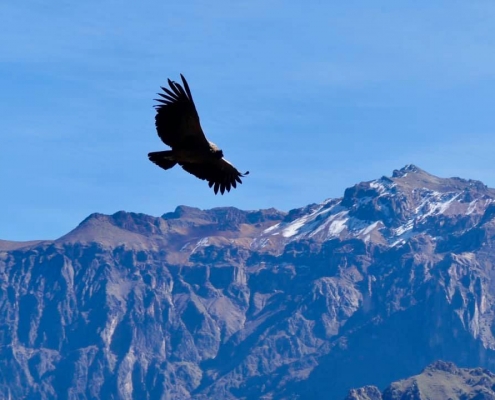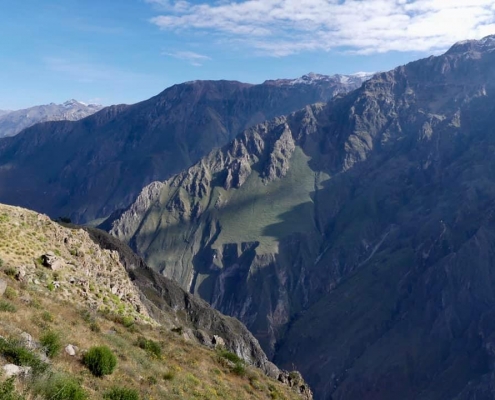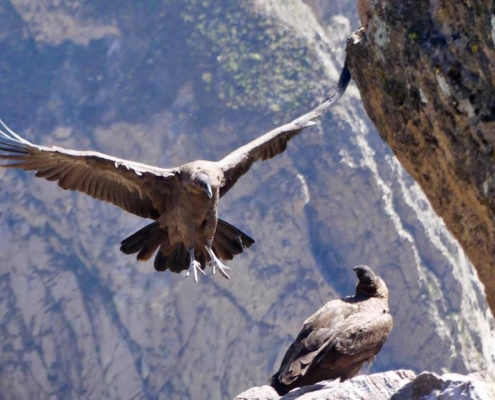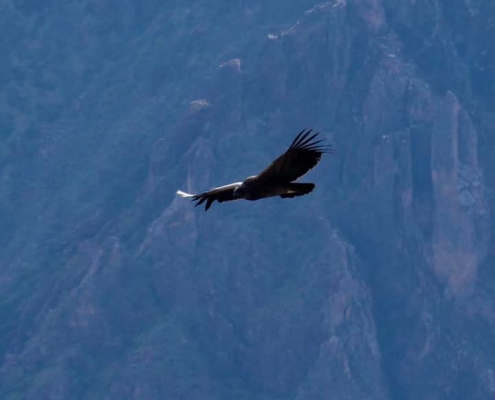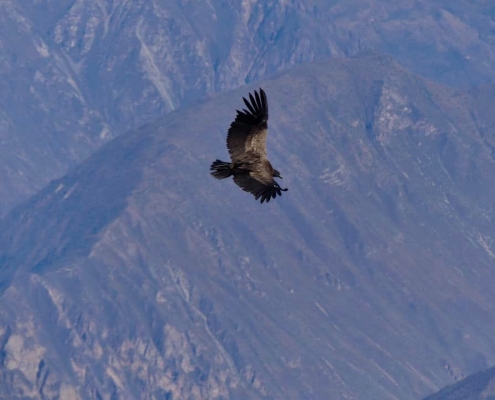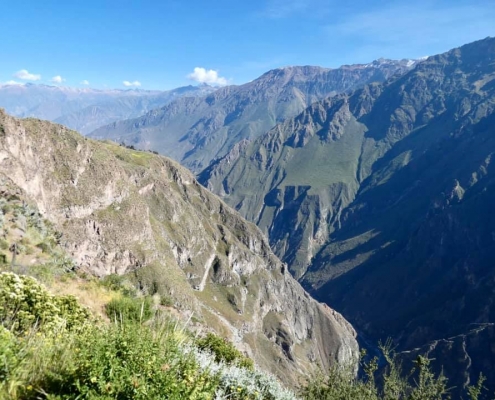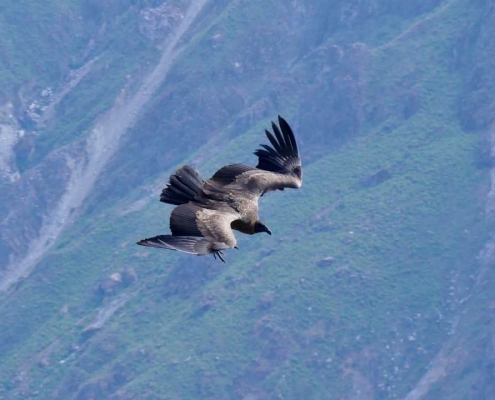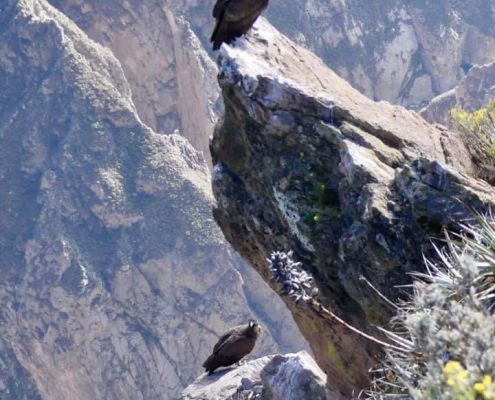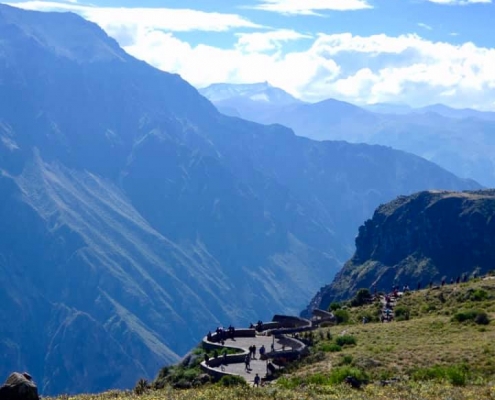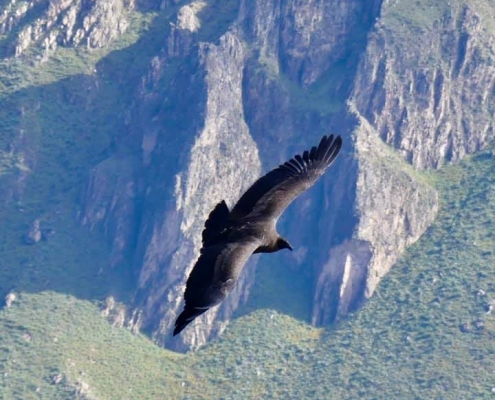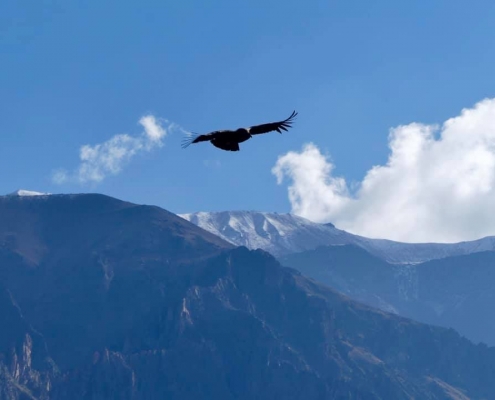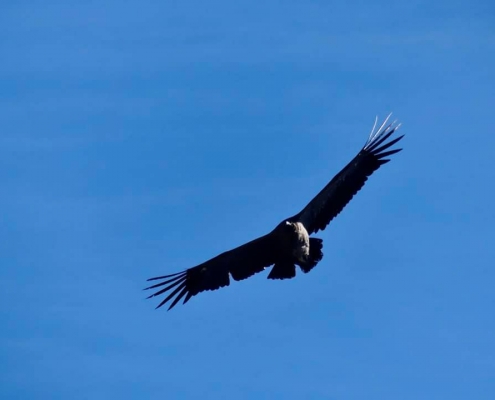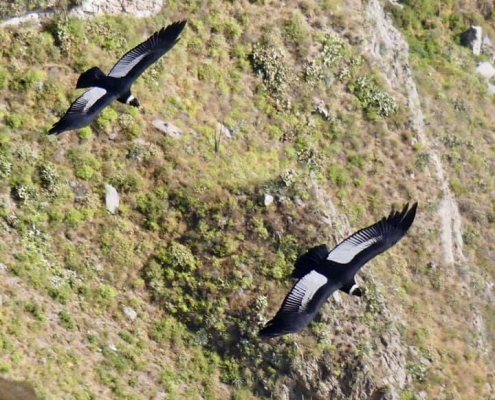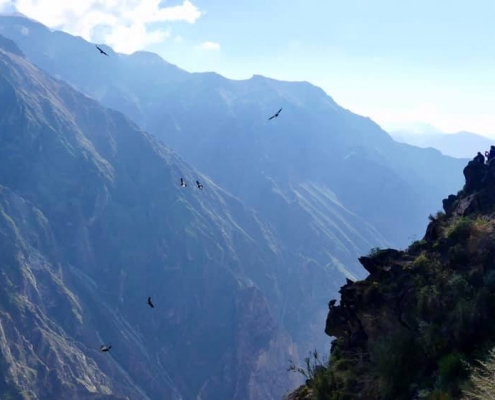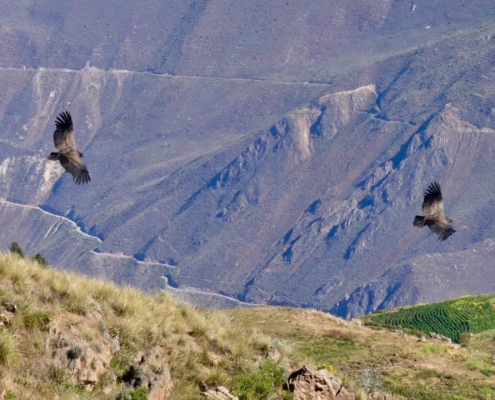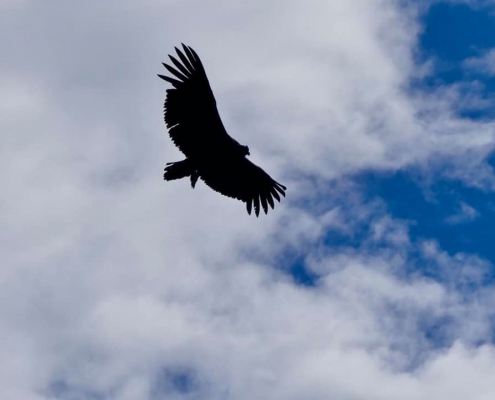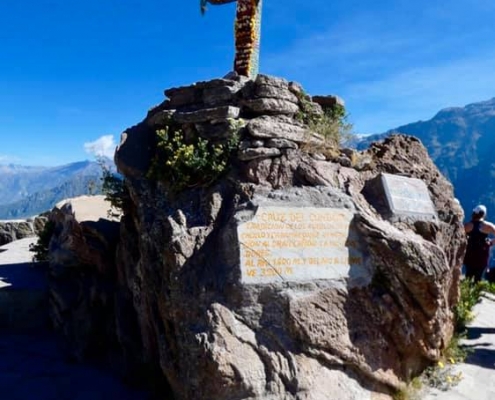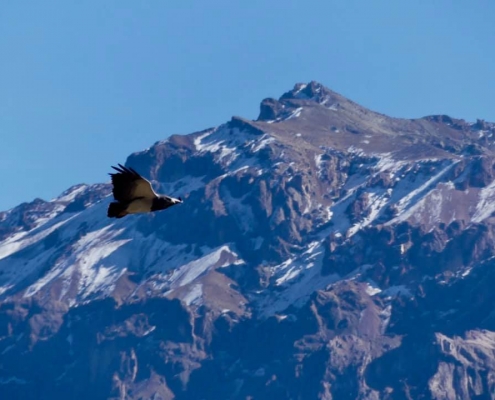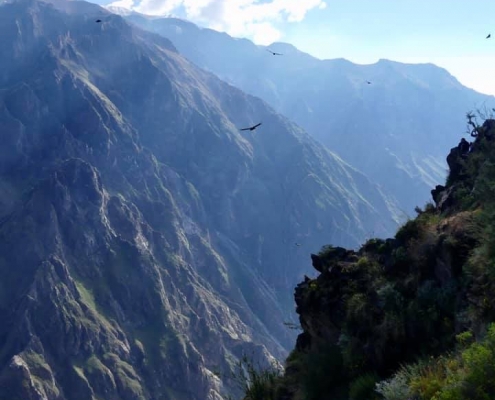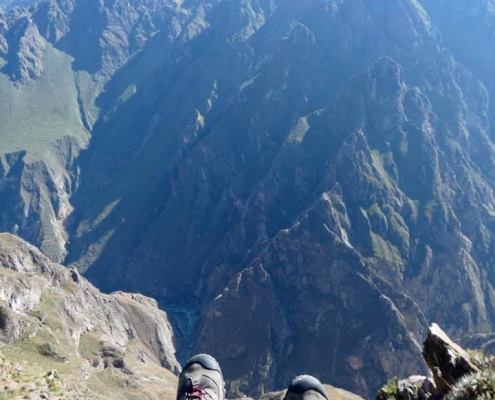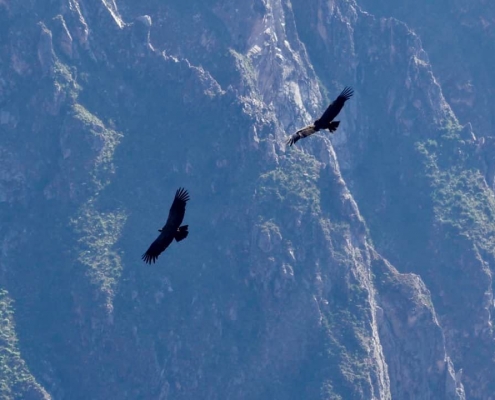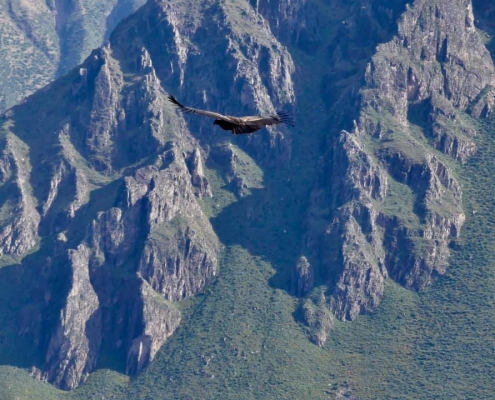Peru: Andean Condors & Colca Canyon
Here I hit two absolute bucket list items with one shot – seeing massive Andean Condors and visiting one of the largest cantons in the world, Colca Canyon. The canyon is 3270m (10,730 ft) deep, making it one of the deepest in the world ( much deeper then Grand Canyon in USA. The Cruz de Condor overlook of Colca Canyon is world famous as being the deepest part of the canyon and also the place place to observe the Andean Condor. I was somewhat expecting to see a couple birds in great distance, but it was over 20-30 massive birds flying literally within feet over your head and some landing on the cliffs very close. Amazing! Andean Condor (lat. Vultur Gryphus) is the largest flying bird in the world (two species of albatross have slightly larger wingspan, but weigh much less). Condors have a wingspan of 3.3m/11ft and weigh up to 15kg/33lb. They are basically vultures and feed exclusively on carrion, soaring above in search of dead alpaca, llama, or even bigger cattle. Condors are apex species and have no natural predators other then humans. Clifftop nests are inaccessible to mammals and other predatory birds ruthlessly attacked by condors if the approach the nests. As such, the mortality of condors is very low, and reproduction is very slow – they take 6-10 years to reach sexual maturity, mate for life, have only 1-2 chicks every 2-4 years, and live up to 60-70 years (the Guinness World Record for longest living flying bird belongs to a condor that lived to 79). Condors are mostly black with vulture-like bold heads; juveniles and females are almost uniformly black, while only older males develop white around their neck and some on the wings. The live usually at 4000-5000m (12-15k ft) of elevation and prefer steep canyon walls, from which they drop down and find hot air thermals to get the lift. In fact, condors almost don’t flop their wings, just one-two flops at take off and landing (Charles Darwin once said he watched a condor for half hour soaring on thermal without a single flap). Several hours spent watching the massive birds swoop above your head – priceless!

